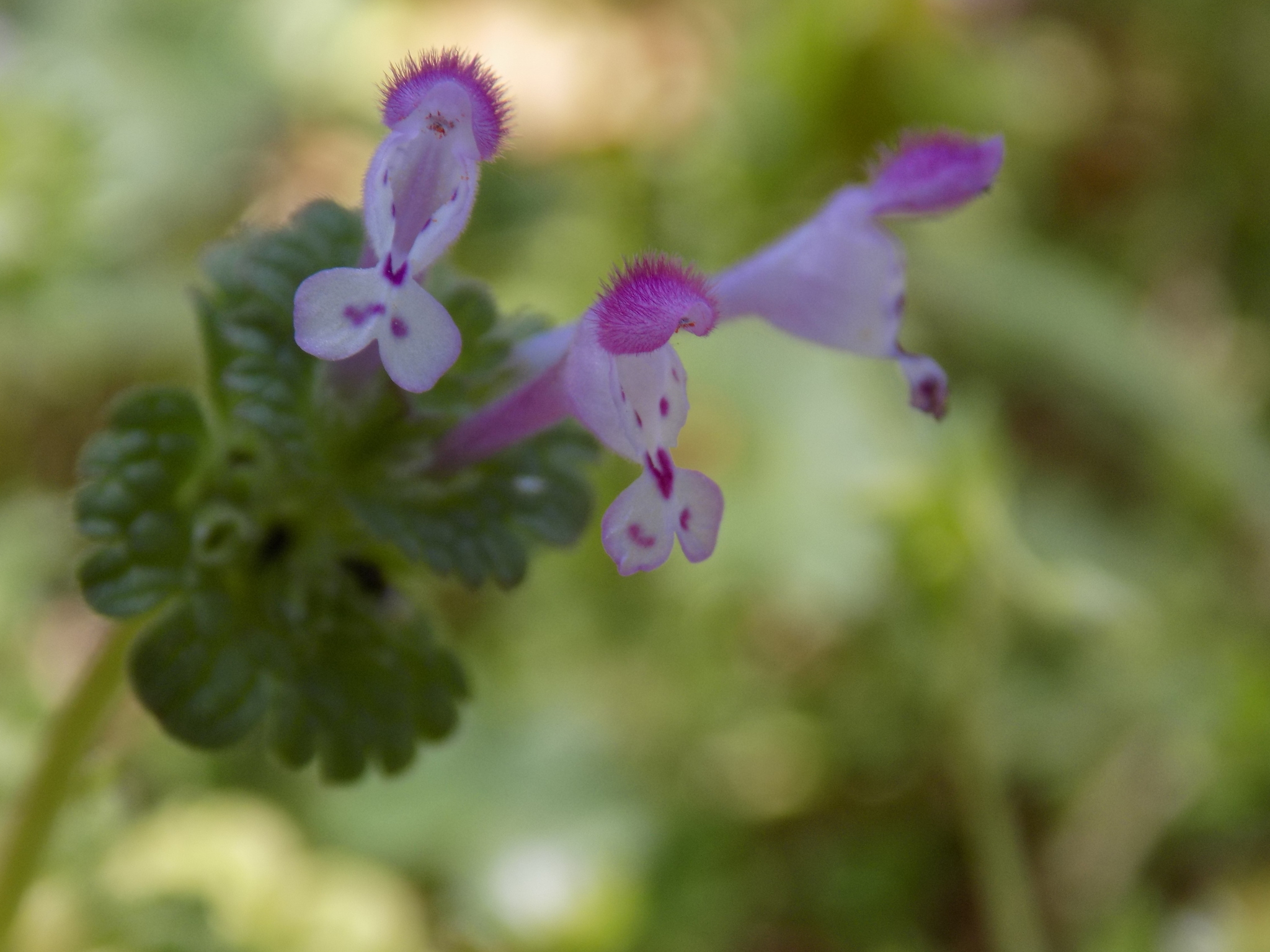
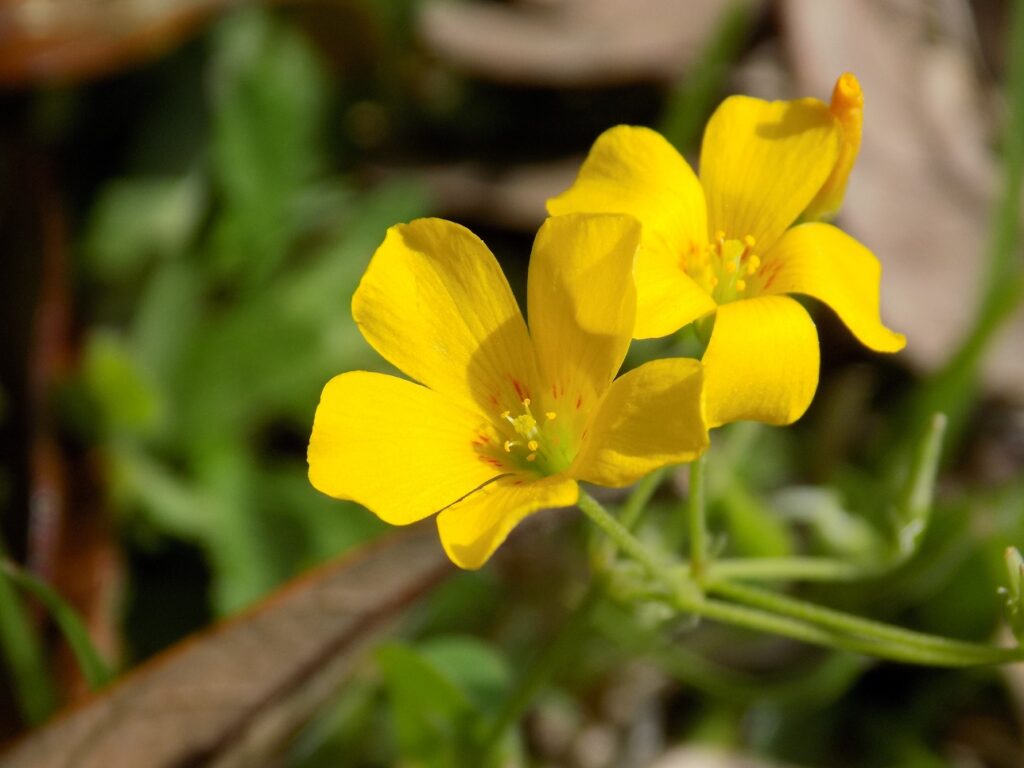
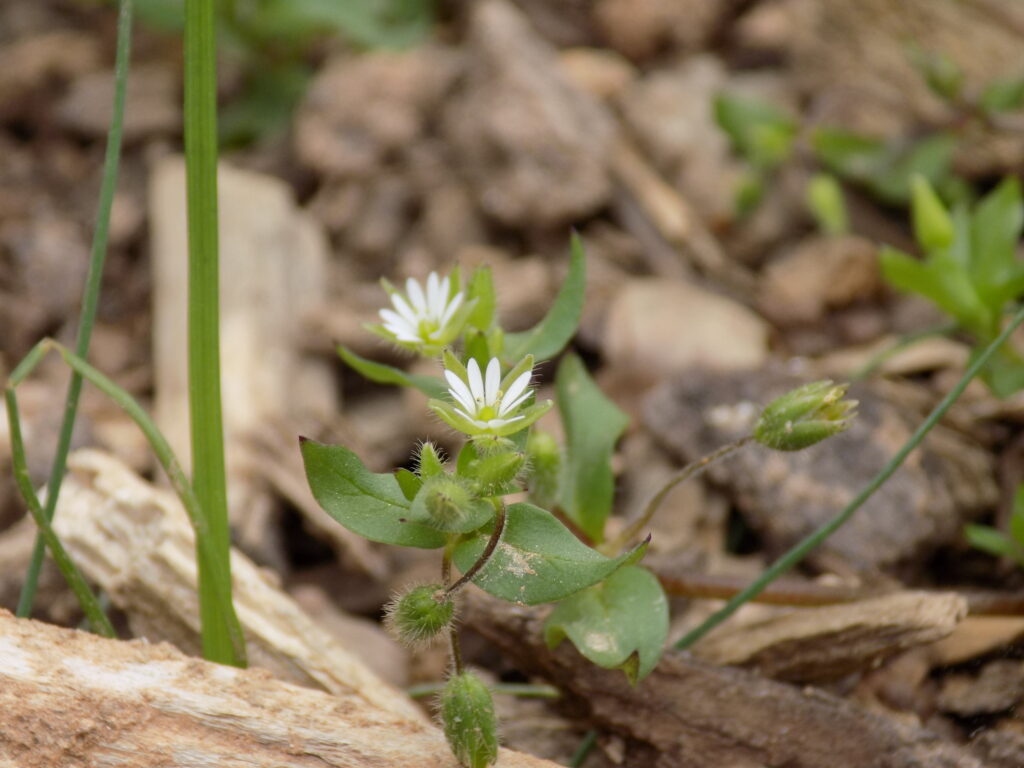

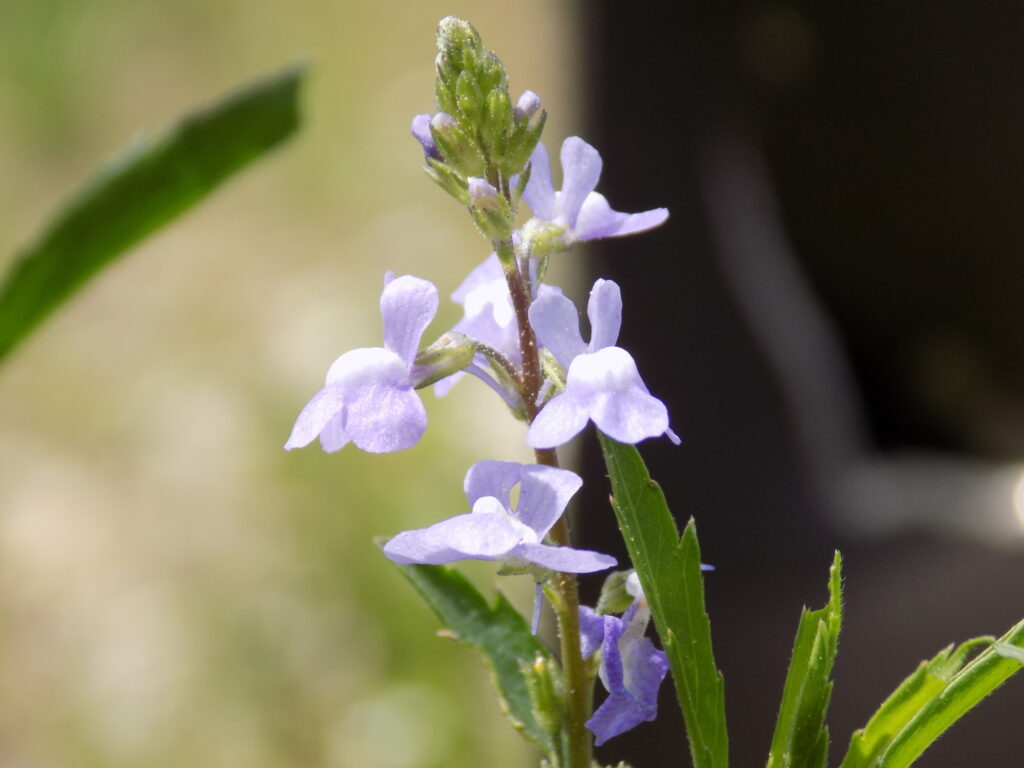
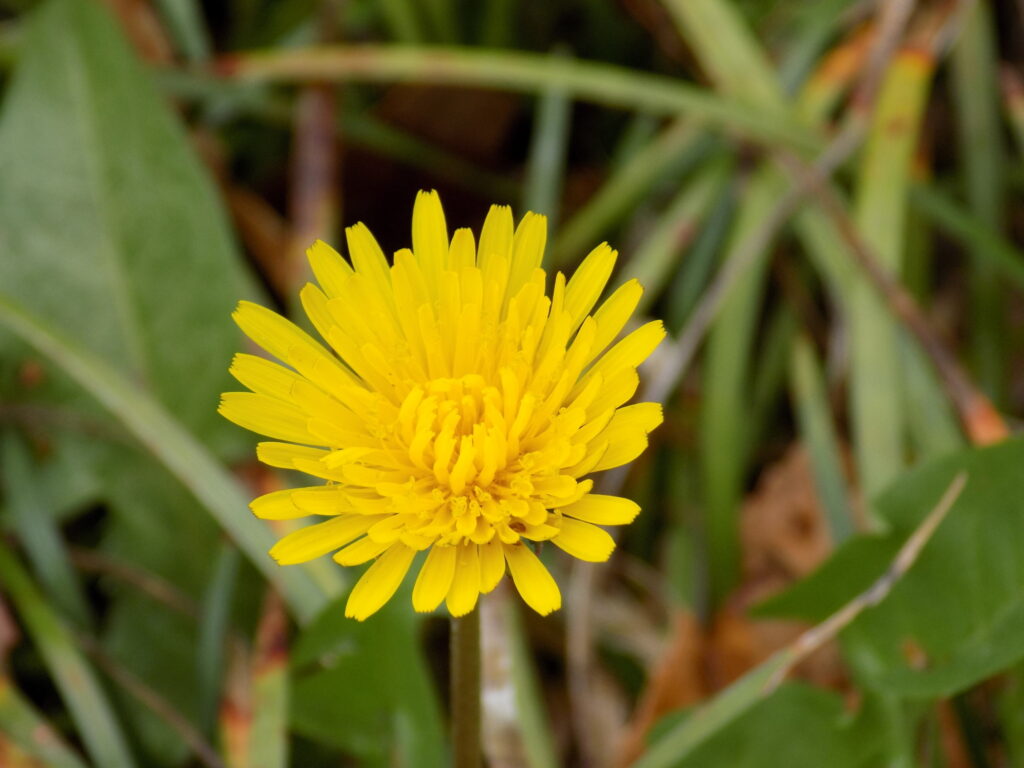
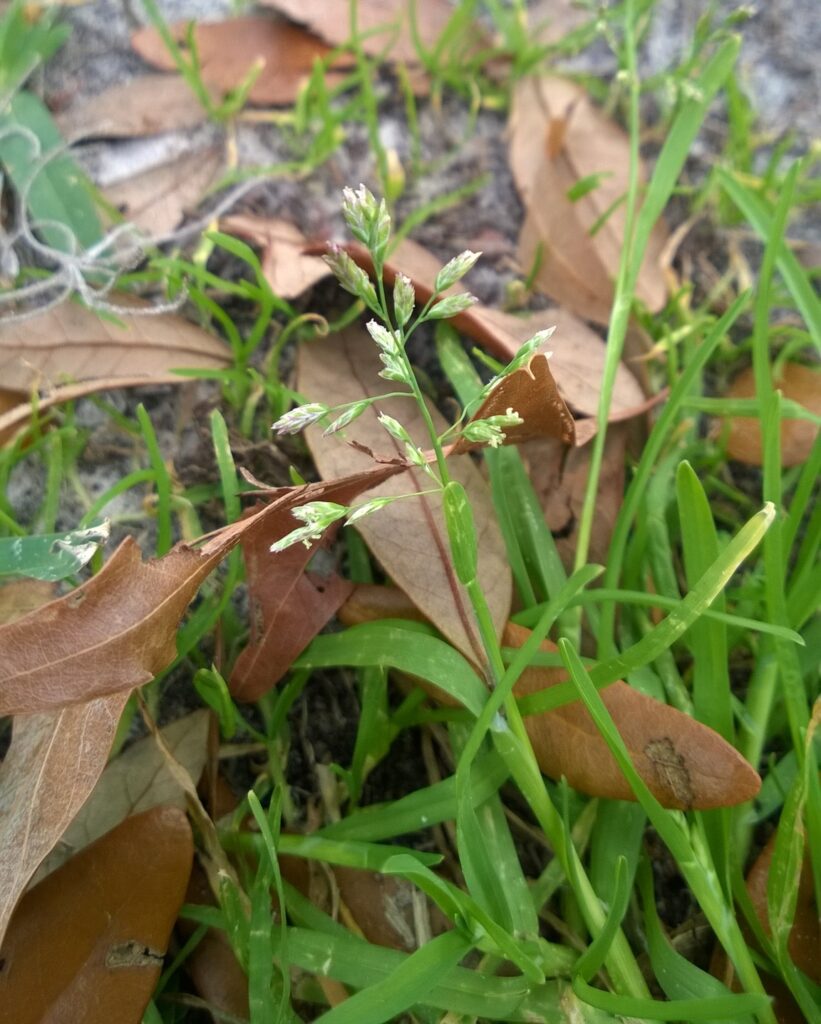
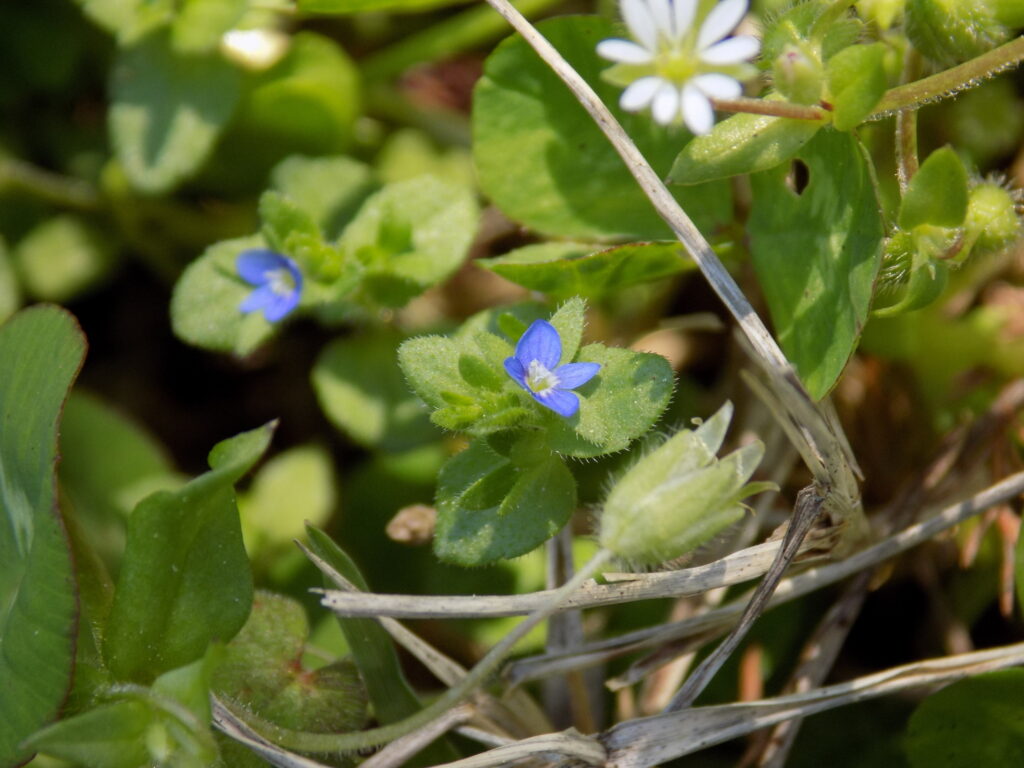
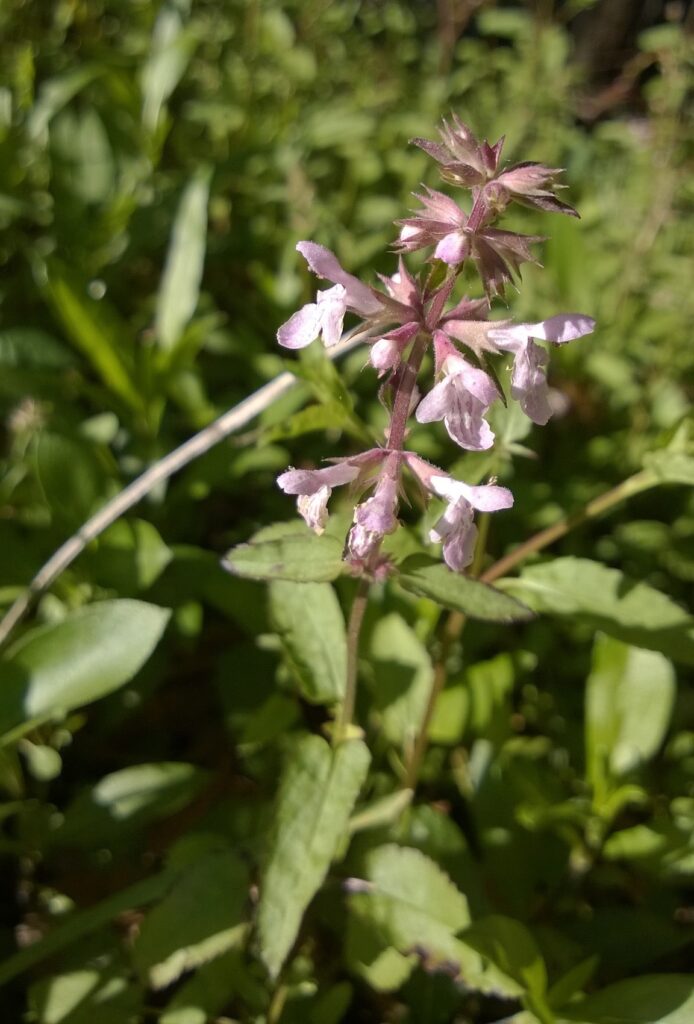
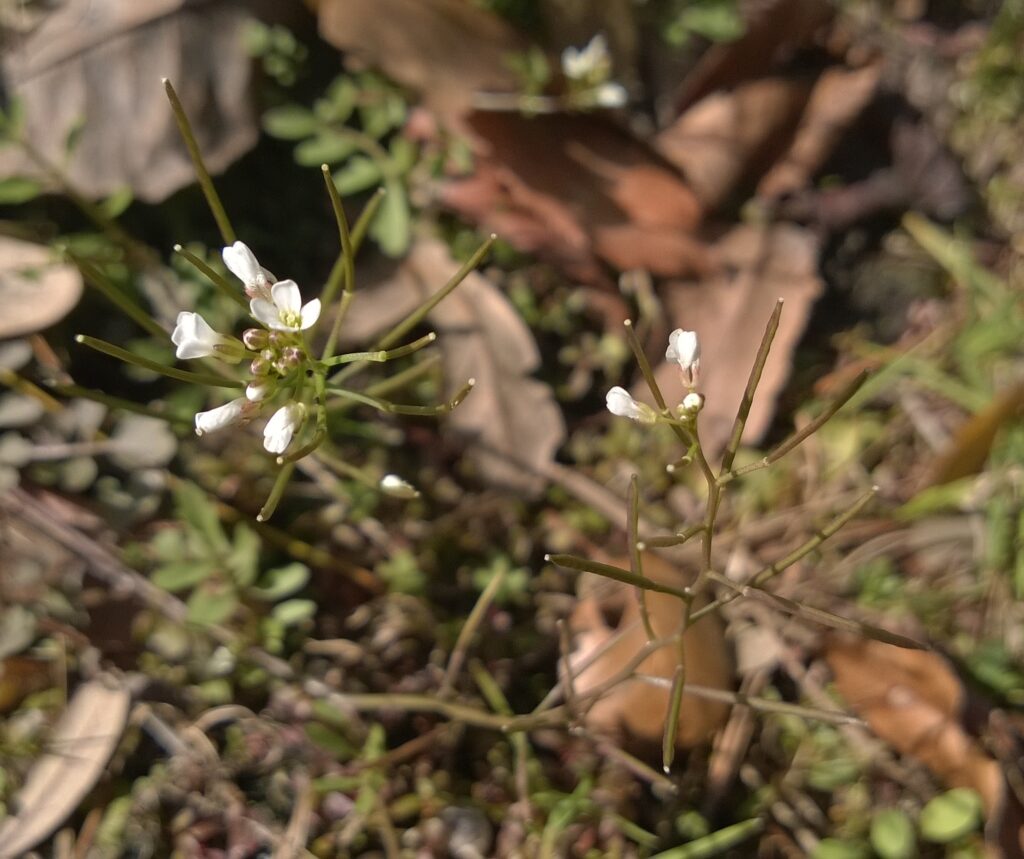

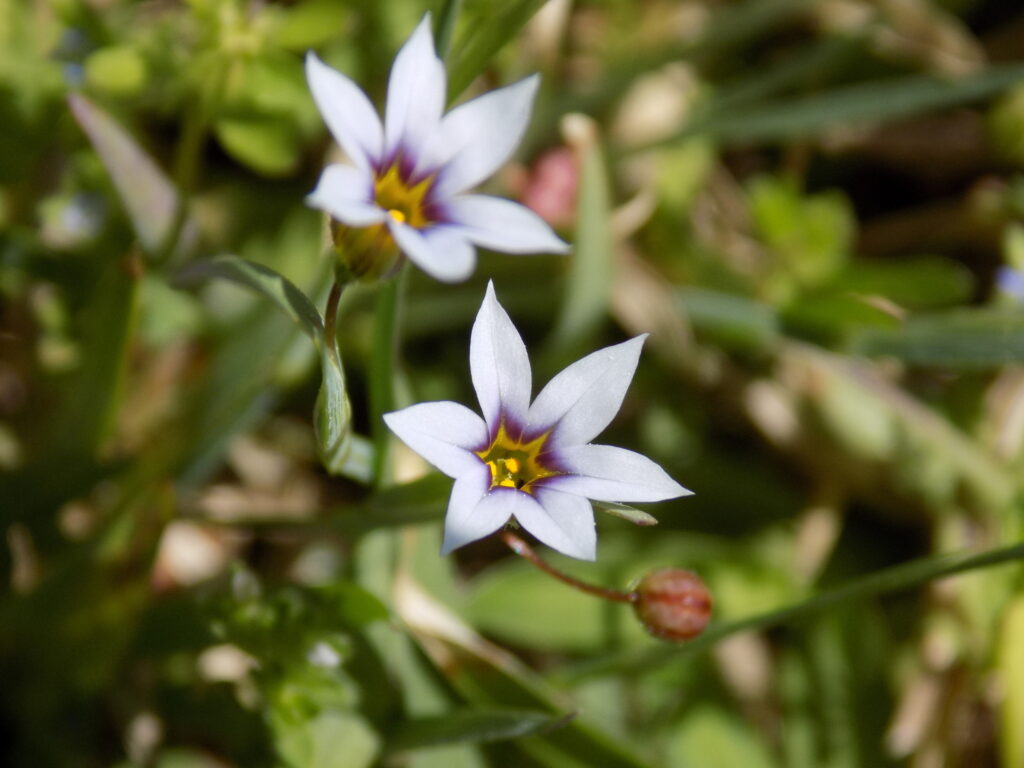
This week for Flora and Fauna Friday, I don’t have a species in particular but a group of plants instead. This week we’re glancing over some of our early spring wildflowers.
Wildflower is a catch-all term used to describe any herbaceous plant that produces a flower and grows freely in the wild. The species we’ll be taking a quick look at today are some of the earliest wildflowers to bloom every spring. These species are also tiny and incredibly abundant. They’re species you can look for in any lawn in the state. Just make sure you look closely. Except for Dandelions, the rest all have flowers less than a quarter inch wide! I was able to find each one blooming in the lawn beside the EIOLT office this morning. These early wildflowers provide a critical early nectar source for pollinators emerging after the winter as well as providing forage for herbivores like Deer.
These early wildflowers share some common characteristics. They grow fast, don’t grow very tall, produce lots of tiny flowers, and make seeds quickly. These species can only grow in the most open of habitats such as lawns, roadsides, and construction sites. Places where vegetation is routinely removed or the ground disturbed. Because of this high frequency of disturbance, these plants want to grow, flower, and seed as fast as possible before they get cut, crushed, or covered up. They also take advantage of the early spring to grow and flower immediately after winter before larger, longer lived wildflowers can establish. Many of the species I have below are introduced exotics. Florida Hedgenettle, for example, is a tuber forming perennial that is invasive in both ruderal and open forest communities. However, the rest of the exotics are not directly harmful to local ecosystems. They do displace and compete with native wildflowers for resources but are easily outcompeted by larger wildflowers later in the season.
Now grab your magnifying glass and your best macro camera and go find these first tiny embers of spring!
In order of appearance we have:
Henbit Deadnettle (Lamium amplexicaule) [exotic]
Slender Yellow Wood-Sorrell (Oxalis dillenii)
Common Chickweed (Stellaria media) [exotic]
Black Medick (Medicago lupulina) [exotic]
Canada Toadflax (Nuttallanthus canadensis)
Common Dandelion (Taxacarum officinale) [exotic]
Annual Rye (Poa Annua) [exotic]
Corn Speedwell (Veronica arvensis) [exotic]
Florida Hedgenettle (Stachys floridana) [exotic]
Pennsylvania Bittercress (Cardamine pensylvanica)
Tiny Bluet (Houstonia pusilla)
Annual Blue-eyed Grass (Sisyrinchium rosulatum)
INDIVIDUAL DESCRIPTIONS
Henbit Deadnettle (Lamium amplexicaule), an exotic member of the mint family, Lamiaceae.
Slender Yellow Wood-Sorrell (Oxalis dillenii), a native member of the Woodsorrel family, Oxalidaceae. Their leaves may look very similar to those of the Clovers, but they’re completely unrelated.
Common Chickweed (Stellaria media), an exotic member of the Pink family, Caryophyllaceae.
Black Medick (Medicago lupulina), an exotic member of the legume family, Fabaceae.
Canada Toadflax (Nuttallanthus canadensis), a native member of the Plantain family, Plantaginaceae. Not the culinary Plantain, which is a species of Banana, but the botanical Plantains.
Common Dandelion (Taxacarum officinale), an exotic member of the Sunflower family, Asteraceae.
Annual Rye (Poa annua), an exotic member of the grass family. It’s a close relative of Kentucky Bluegrass, a common turfgrass.
Corn Speedwell (Veronica arvensis), another exotic member of the Plantain family, Plantaginaceae.
Florida Hedgenettle (Stachys floridana), an invasive exotic member of the Mint family, Lamiaceae. Florida Hedgenettle is an invasive species that can outcompete native wildflowers for resources. It’s a perennial that forms an underground tuber. Which it regenerates from in the spring. You’ve probably seen these strange looking tubers before. They’re about the size and shape of your thumb, white, and look like oversized maggots. (Or maybe the Michelin Man’s lost pinky)
Pennsylvania Bittercress (Cardamine pensylvanica), a native member of the Mustard family, Brassicaceae. (And yes, the specific epithet is supposed to be misspelled)
Tiny Bluet (Houstonia pusilla), a native member of the Bedstraw family, Rubiaceae. (I may be writing a full post about this genus of tiny flowers in the coming weeks) Annual Blue-eyed Grass (Sisyrinchium rosulatum), a native member of the Iris family, Iridaceae. (I’ll certainly be writing a full post about this genus in the coming weeks)